Sösdala-Untersiebenbrunn Style
Sösdala-Untersiebenbrunn Style, stamped ornamentation popular across much of Europe during the early →Migration Period (phase D) ranging from Scandinavia, through central to south-eastern Europe. The style takes its name from two archaeological finds: a deposit of horse harness elements and saddles discovered at Sösdala (fig. 1-3.) in south Sweden (accidental discovery made in 1929) and a group of elite burials known from Untersiebenbrunn in Lower Austria (discovered by accident in 1910). Ornamentation in Sös.-Unt. style appears on elements of sumptuous horse bridles and on elements of belt sets (e.g., buckles and strap-ends, type Strzegocice-Tiszaladány-Kercz) and in Scandinavia also on sheet brooches (Blechfibeln) and assorted pendants (pelta-shaped, shield-shaped, biconical - fig. 3.), distinguished as Sösdala horizon. The entire surface of an object was covered with a complex ornament of stamped motifs (stars, multicentric rings and half-circles, filled in triangles, rectangles, dots), shallow excised designs (more notably, the distinctive rosette motif) and niello. Another motif frequent in Scandinavia is that of animal heads shown in profile (fig. 1-2.). Most of the objects decorated in Sös.-Unt. style are made of silver, gilded silver, more rarely, bronze inlaid with silver, very rarely, gold. They may be regarded as symbols of elite status of their owner. Sösdala-Untersiebenbrunn style is dated from the second half (Sösdala) or late 4th century (Untersiebenbrunn) through to the first half of the 5th century. The impact of the Scandinavian Sösdala style led to the emergence on Balt territory →Balts (Sambian Peninsula) of a local variant of stamped ornamentation, the so-called Sambian horizon (brooches with a star- and spade-shaped foot, buckles with a metope on the pin, →Tongue-shaped strap-end).
AB-W
Literature: W. Kubitschek, Grabfunde in Untersiebenbrunn (auf dem Marchfelde), „Jahrbuch für Altertumskunde“ 5, 1911, p. 32-74; J.E. Forssander, Provinzialrömisches und Germanisches. Stilstudien zu den schonischen Funde von Sösdala und Sjörup, „Meddelanden från Lunds Universitets Historiska Museum“ 1937, p. 11-100; J. Tejral, Neue Aspekte der frühvölkerwanderungszeitlichen Chronologie im Mitteldonauraum, [in:] J. Tejral, H. Friesinger, M. Kazanski (eds.), Neue Beiträge zur Erforschung der Spätantike im mittleren Donauraum, Spisy Arch. Ustavu Česk. Akad. 8, Brno 1997, p. 321-392; A. Bitner-Wróblewska, The Sösdala horizon and correlation of Balt-Scandinavian chronology, [w:] From Samland to Rogaland. East-West connections in the Baltic basin during the Early Migration Period, Warszawa 2001, p. 89-120; Ch. Fabech, U. Näsman, A lonely rider? The finding place of the Sösdala find and the context of its finds, [in:] Inter ambo maria. Northern Barbarians from Scandinavia towards the Black Sea, Simferopol 2013 (forthcoming); Ch. Fabech, U. Näsman (red.), The Sösdala Horsemen and the equestrian elite of fifth century Europe, Jysk Arkæologisk Selskabs Skrifter, Århus 2017.
-
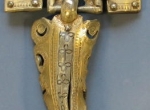 full resolution
full resolution
Fig. 1. Sösdala, elements of horse harness. Photo Ch. Fabech. Lund University Historical Museum.
-
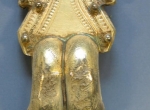 full resolution
full resolution
Fig. 2. Sösdala, elements of horse harness. Photo Ch. Fabech. Lund University Historical Museum.
-
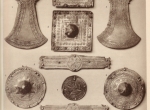 full resolution
full resolution
Fig. 3. Untersiebenbrunn, elements of horse harness (W. Kubitschek op.cit., Plate IV).
-
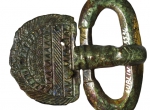 full resolution
full resolution
Fig. 4. Belt buckle found in grave in Lublin (phot. B. Solarewicz).
-
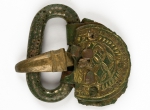 full resolution
full resolution
Fig. 5. Belt buckle found at Pyszków (phot. B. Solarewicz).
-
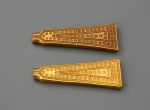 full resolution
full resolution
Fig. 6. Trapezium-shaped gold plaques found at Skalin (Zachodniopomorskie Voivodeship, phot. G. Solecki / A. Piętak)


